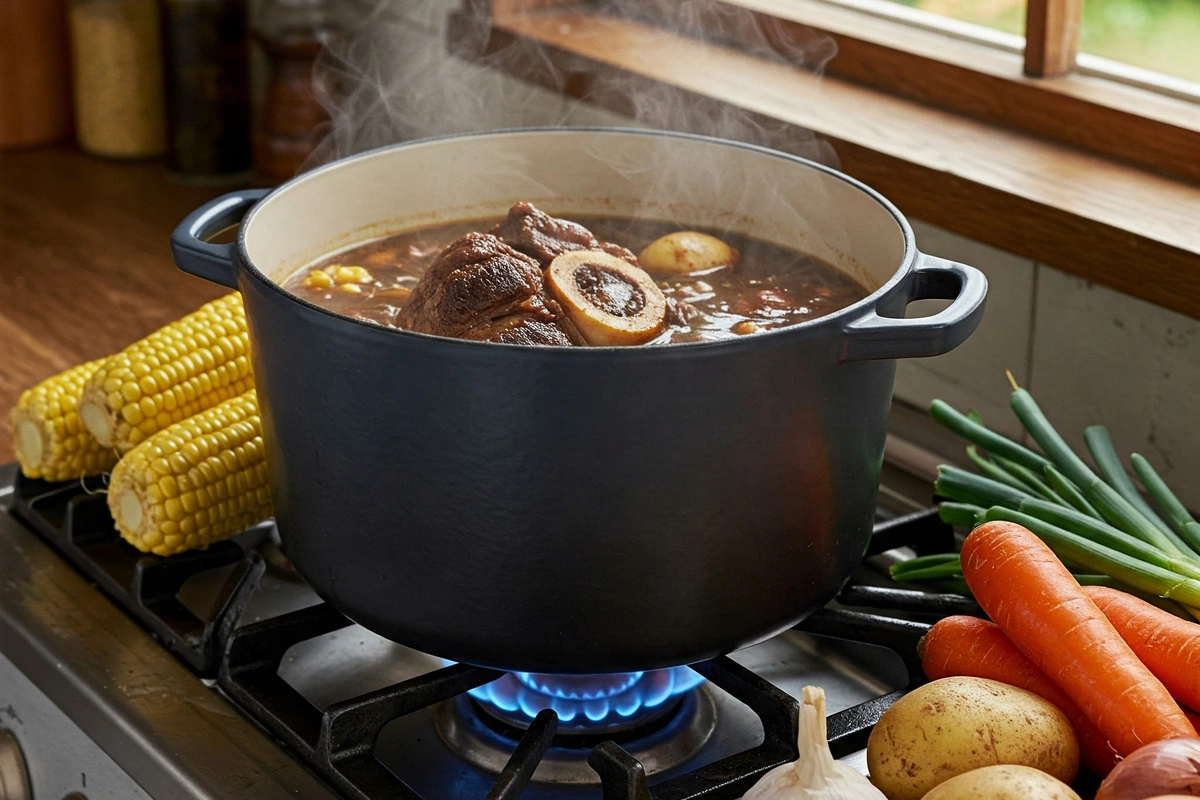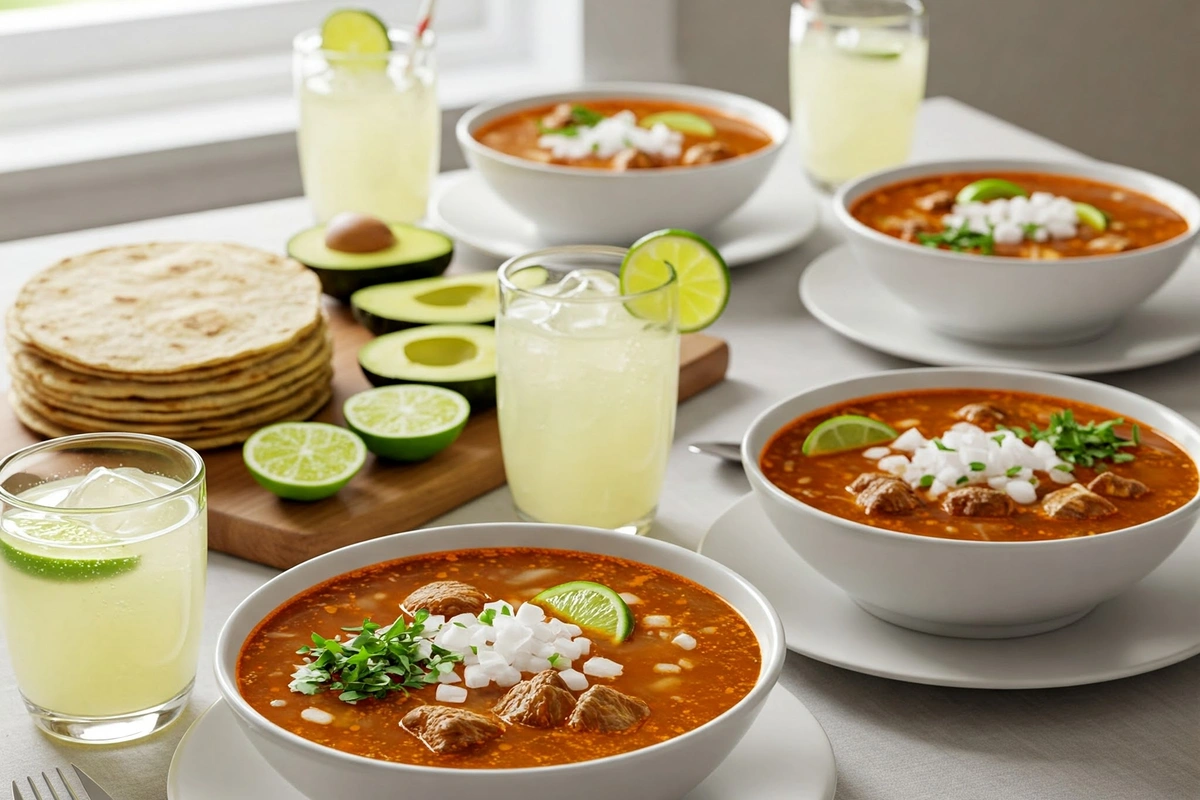If you’re craving a warm, comforting dish that feels like a hug from the inside, caldo de res is exactly what you need. This traditional Mexican beef soup, packed with tender meat and nutrient-rich vegetables, has been a staple of family gatherings and celebrations for generations. From its humble origins in rural kitchens to its presence on modern restaurant menus, caldo de res continues to win hearts with its hearty flavors and simplicity. In this article, we’ll explore everything you need to know to make an authentic caldo de res recipe. You’ll learn about its essential ingredients, step-by-step instructions, variations, and expert tips to perfect your cooking. Ready to dive in? Let’s go!
Introduction to Caldo de Res
What is caldo de res?
At its core, caldo de res—also known as Mexican beef soup—is a rustic dish made with slow-simmered bone-in beef and a medley of seasonal vegetables like corn, carrots, and potatoes. The result is a rich, savory broth that’s both nourishing and satisfying. Its literal translation, “beef broth,” doesn’t quite capture the depth of flavor you’ll experience with each spoonful.
Origin and cultural significance
Caldo de res has deep roots in Mexican culinary traditions, with variations appearing throughout the country. It’s a dish that transcends regions and social classes, offering comfort and nourishment across generations. Historically, it was prepared with whatever ingredients were available locally, making it an adaptable and budget-friendly option for families.
This soup is often served during colder months or on special occasions, symbolizing warmth, togetherness, and hospitality. In many households, it’s also believed to have restorative properties—perfect for those recovering from a cold or needing an energy boost after a long day.
Why it’s a staple comfort food in Mexican cuisine
What makes caldo de res a favorite? Well, for starters, it’s a meal in itself. The hearty broth, tender chunks of beef, and vibrant vegetables come together to create a wholesome, well-balanced dish. It’s also incredibly versatile. You can tweak the recipe to fit your taste, add a squeeze of lime for brightness, or sprinkle fresh cilantro for extra freshness. Whether served with warm tortillas or enjoyed on its own, caldo de res is sure to comfort both the body and soul.
Key Ingredients for Caldo de Res
Choosing the right beef
The backbone of any good caldo de res recipe is the beef itself. Bone-in beef shank is the gold standard for this dish, as it slowly releases rich marrow into the broth, deepening its flavor. If you can’t find beef shank, other options like oxtail or short ribs can work well too. These cuts contain connective tissue that breaks down during cooking, giving the soup its signature velvety texture.
For those who prefer leaner meat, boneless chuck roast can be used. However, you’ll miss out on some of the robust flavors that only bones can provide. For a perfect balance, try using a combination of both bone-in and boneless cuts.
Essential vegetables
Fresh, colorful vegetables are what transform caldo de res from a simple broth into a complete meal. Traditional recipes often include:
- Corn on the cob, cut into chunks
- Carrots and potatoes, which add sweetness and body
- Zucchini and cabbage, for a fresh and tender bite
Feel free to adjust the vegetables based on your preferences. Other popular additions include green beans or chayote squash. The key is to add firmer vegetables early on and softer ones later, so everything cooks evenly.
Aromatics and seasonings
What gives caldo de res its comforting aroma? Simple but powerful ingredients like onions, garlic, and bay leaves form the base. Season generously with salt, pepper, and cumin to highlight the natural flavors. For a bright, zesty finish, serve with lime wedges and freshly chopped cilantro.
Remember, the beauty of this recipe lies in its adaptability. Whether you’re following a strict tradition or putting your own spin on it, using quality ingredients is essential for success.
Equipment Needed to Cook Caldo de Res
Basic kitchen tools
Making caldo de res doesn’t require fancy gadgets, but you’ll need a large stockpot to hold all the beef, vegetables, and broth. Since the soup is simmered for hours, choose a pot with a heavy base to prevent scorching. A pot with a tight-fitting lid will help retain moisture, ensuring the meat cooks evenly.
Optional equipment
For those short on time, a pressure cooker or Instant Pot can cut the cooking time in half without sacrificing too much flavor. However, some purists argue that the slow-simmering process is crucial for achieving the dish’s full depth of flavor.
Additionally, a skimming spoon is handy for removing excess fat and impurities from the surface of the broth. Properly removing this layer helps create a clearer, cleaner-tasting soup.
How to Make Caldo de Res Step-by-Step
Preparing the beef and broth
Begin by rinsing your bone-in beef shank under cold water to remove any impurities. Place the meat in a large stockpot and cover it with about 8-10 cups of water. Bring it to a boil over medium-high heat, then reduce the heat to a simmer. Skim off any foam or scum that rises to the surface during the first 15 minutes—this keeps your broth clear and clean-tasting.
Next, add your aromatics: onions, garlic cloves, and bay leaves. Allow the beef to simmer gently for about 1.5 to 2 hours, or until it’s tender. The marrow inside the bones will slowly release into the broth, creating a rich, flavorful base for your caldo de res recipe.
Adding vegetables
Timing is crucial when adding vegetables. Start by adding carrots, potatoes, and corn since these take longer to cook. Let them simmer for about 20-30 minutes until they begin to soften. Afterward, add zucchini, green beans, and cabbage wedges. These delicate vegetables only need about 10-15 minutes to cook through without becoming mushy.
Season the soup with salt, pepper, and a pinch of ground cumin for warmth. Stir gently to ensure the flavors are evenly distributed.
Finishing touches
Before serving, taste the broth and adjust the seasoning as needed. For a vibrant touch, serve the soup with fresh cilantro and lime wedges on the side. The lime juice adds a tangy brightness that complements the deep, meaty flavors of the broth. Warm corn tortillas make the perfect accompaniment, allowing you to scoop up the hearty chunks of beef and vegetables.
At this point, your caldo de res should be fragrant, flavorful, and ready to serve. Enjoy it hot and savor every comforting spoonful!
Variations and Customizations
Regional variations of caldo de res
Depending on where you go in Mexico, you might find different takes on caldo de res. In northern regions, cooks may add chilies or spices to give the broth a slightly smoky heat. Meanwhile, southern versions often emphasize fresh herbs like epazote and might include yucca instead of potatoes.
If you’re feeling adventurous, you can explore these regional tweaks to suit your taste preferences. Experimenting with local ingredients adds a personal touch to the classic recipe.
Substituting ingredients for dietary needs
Making caldo de res healthier or tailored to specific diets is easy. For a lighter version, swap out potatoes for cauliflower florets or sweet potatoes. You can also use leaner cuts of beef or even replace the beef entirely with chicken or turkey for a different twist.
If you’re following a low-sodium diet, use homemade stock instead of water and reduce the amount of added salt. Adding plenty of fresh herbs can boost the flavor without extra sodium.
Spicing it up
Want to add a kick to your caldo de res recipe? Toss in a few sliced jalapeños or a dash of chili powder while simmering the broth. You can also serve the soup with salsa roja on the side for those who prefer a spicier meal. This way, you cater to everyone’s heat tolerance!
Serving Suggestions for Caldo de Res Traditional accompaniments
One of the best things about a hearty caldo de res recipe is how well it pairs with other traditional Mexican sides. Warm corn tortillas are a must—they’re perfect for scooping up tender chunks of beef and vegetables. For added flavor, try serving the soup with a side of Mexican rice or refried beans. These sides complement the rich broth and provide a satisfying balance of textures.
If you’re hosting guests, consider offering a small spread of garnishes, including sliced avocado and pickled jalapeños. This lets everyone customize their bowl to their liking, making the meal feel extra special.
Suggested garnishes
No bowl of caldo de res is complete without a few finishing touches. Fresh cilantro and diced onions add a bright, herbaceous contrast to the deep flavors of the broth. A squeeze of lime juice lifts the dish with a pop of acidity, enhancing both the beef and vegetables.
For those who like a bit of heat, sprinkle some crushed red pepper flakes or serve with your favorite salsa. These garnishes give the dish a fresh, vibrant flair that keeps each spoonful exciting.
Beverage pairings
To wash down the richness of the soup, try pairing it with a refreshing agua fresca, such as horchata or tamarind juice. Alternatively, a cold Mexican beer like Modelo or Pacifico can cut through the hearty flavors. If you prefer wine, a light red like Pinot Noir works wonderfully with the meaty broth.
Expert Tips for Perfect Caldo de Res
Pro secrets from top chefs
Achieving a perfect caldo de res is all about patience. Many chefs recommend simmering the beef bones for at least two hours to extract maximum flavor. Avoid boiling the broth too vigorously, as this can make the meat tough and cloudy the soup. Instead, keep the pot at a gentle simmer to develop a rich, clear broth.
Another expert tip is to briefly roast your vegetables, like corn and carrots, before adding them to the pot. This step enhances their natural sweetness, giving the soup a more complex flavor.
Common mistakes to avoid
One of the most frequent mistakes is adding all the vegetables at the same time. Firmer vegetables like potatoes need more time to cook, while delicate ones like zucchini should go in later. This prevents the softer ingredients from turning mushy, keeping the soup’s texture just right.
Also, don’t forget to season gradually. Since flavors deepen over time, it’s better to taste and adjust the seasoning throughout the cooking process rather than dumping in too much salt at once.
Storing and reheating leftovers
Caldo de res is one of those dishes that tastes even better the next day! Store any leftovers in an airtight container and refrigerate for up to four days. When reheating, gently warm the soup over low heat to prevent the beef from drying out. If the broth thickens overnight, simply add a splash of water to restore its consistency.
Frequently Asked Questions (FAQs)
Can I make caldo de res in an Instant Pot?
Yes, absolutely! If you’re short on time, an Instant Pot can speed things up significantly. Start by using the sauté function to brown the beef shank and release extra flavor. Then, add your water, aromatics, and tougher vegetables like carrots and potatoes. Pressure cook on high for about 35 minutes, followed by a natural release. Once done, add softer vegetables like zucchini and cabbage and cook for an additional 5-10 minutes on the sauté setting.
How long should I cook the beef for maximum tenderness?
The key to tender, fall-apart beef is slow simmering. If you’re cooking on the stovetop, plan for about 1.5 to 2 hours of simmering. For tougher cuts, you may need up to 3 hours. The beef should be fork-tender but not so overcooked that it falls apart when stirred.
What are the best vegetables for caldo de res?
Stick to a mix of hearty and tender vegetables. Popular options include corn, carrots, potatoes, zucchini, and cabbage. You can customize your soup by adding other favorites like chayote or green beans.
Can I freeze leftover caldo de res?
Yes, you can freeze caldo de res. Allow the soup to cool completely before transferring it to airtight containers. It can last in the freezer for up to 3 months. When reheating, defrost overnight in the fridge and warm it gently over the stove.
Nutritional Information and Health Benefits
Nutritional breakdown per serving
A serving of caldo de res typically provides a well-balanced mix of protein, carbohydrates, and fiber. Each bowl contains around 300-400 calories, depending on portion size and ingredients. The beef shank offers a rich source of protein and minerals like iron and zinc, essential for maintaining energy and supporting immune function.
Health benefits of key ingredients
Bone broth, a key component of the caldo de res recipe, is known for its nourishing properties. It contains collagen, which may promote joint health and improve skin elasticity. The vegetables add a wealth of vitamins and minerals. For example, carrots are high in vitamin A, while potatoes provide potassium.
How to make a lighter version of caldo de res
For a lower-calorie version, reduce the portion of beef and swap in leaner cuts like sirloin or chuck roast. You can also replace potatoes with lower-carb options like cauliflower. Use homemade, low-sodium broth to control salt levels without sacrificing flavor.



